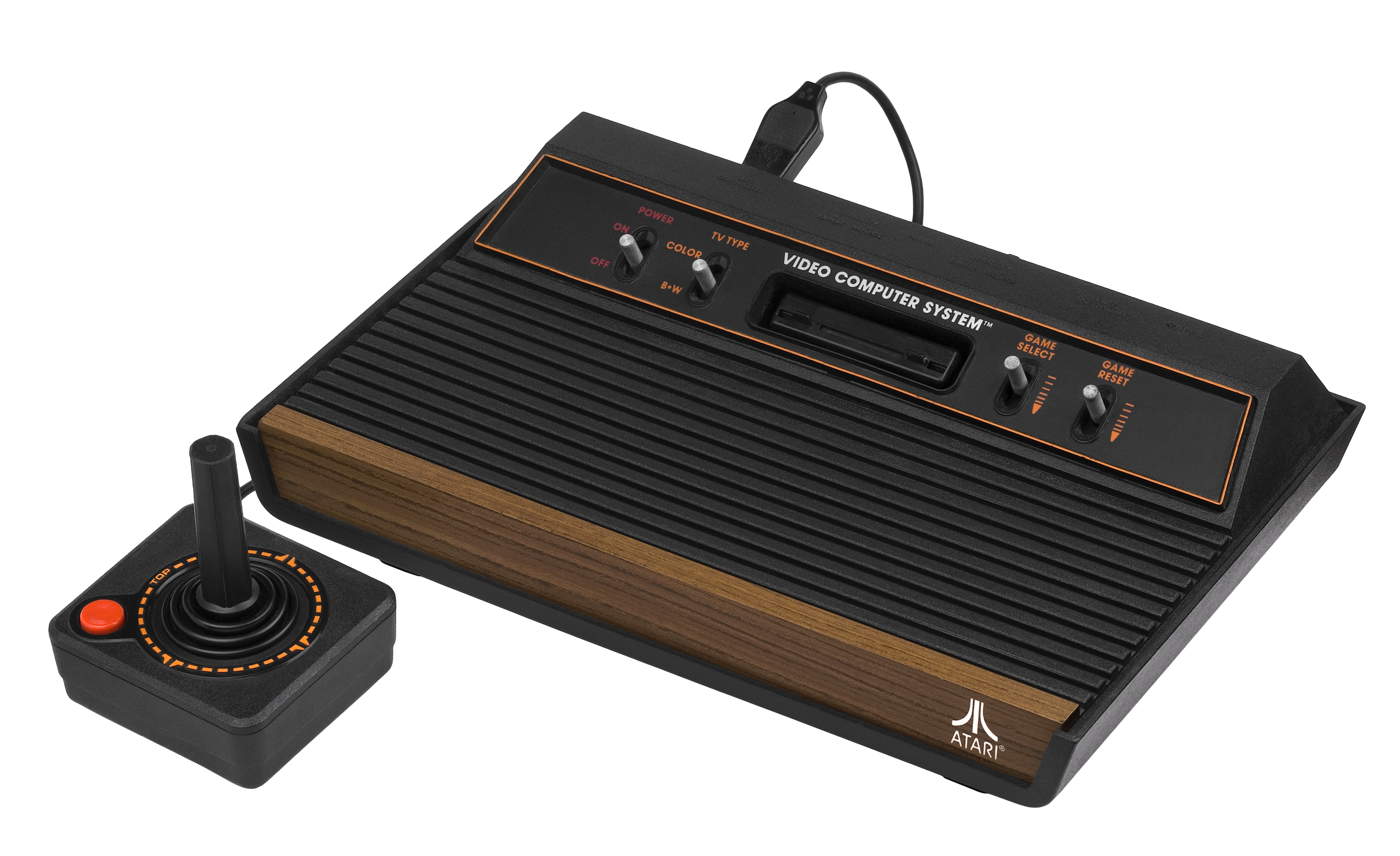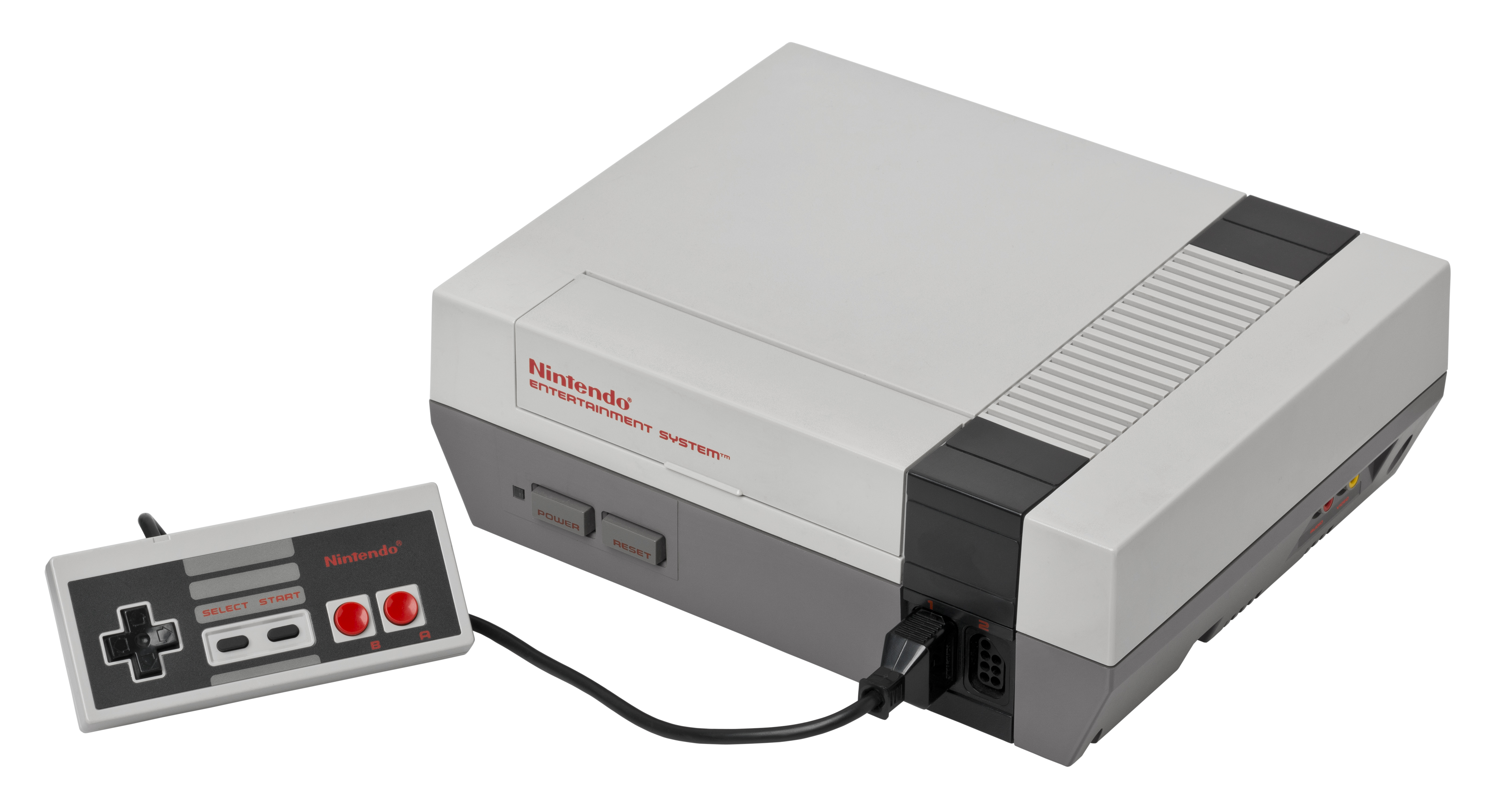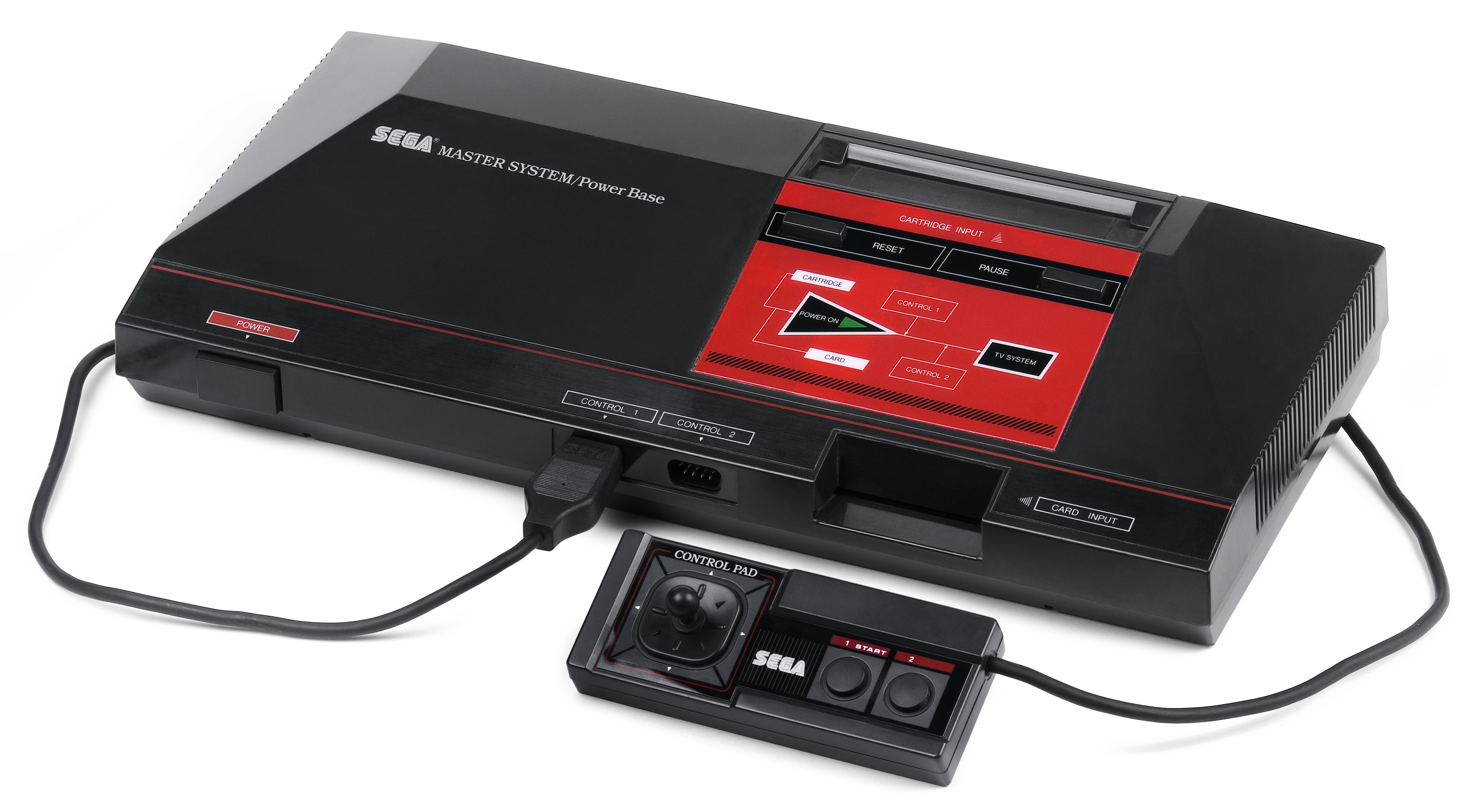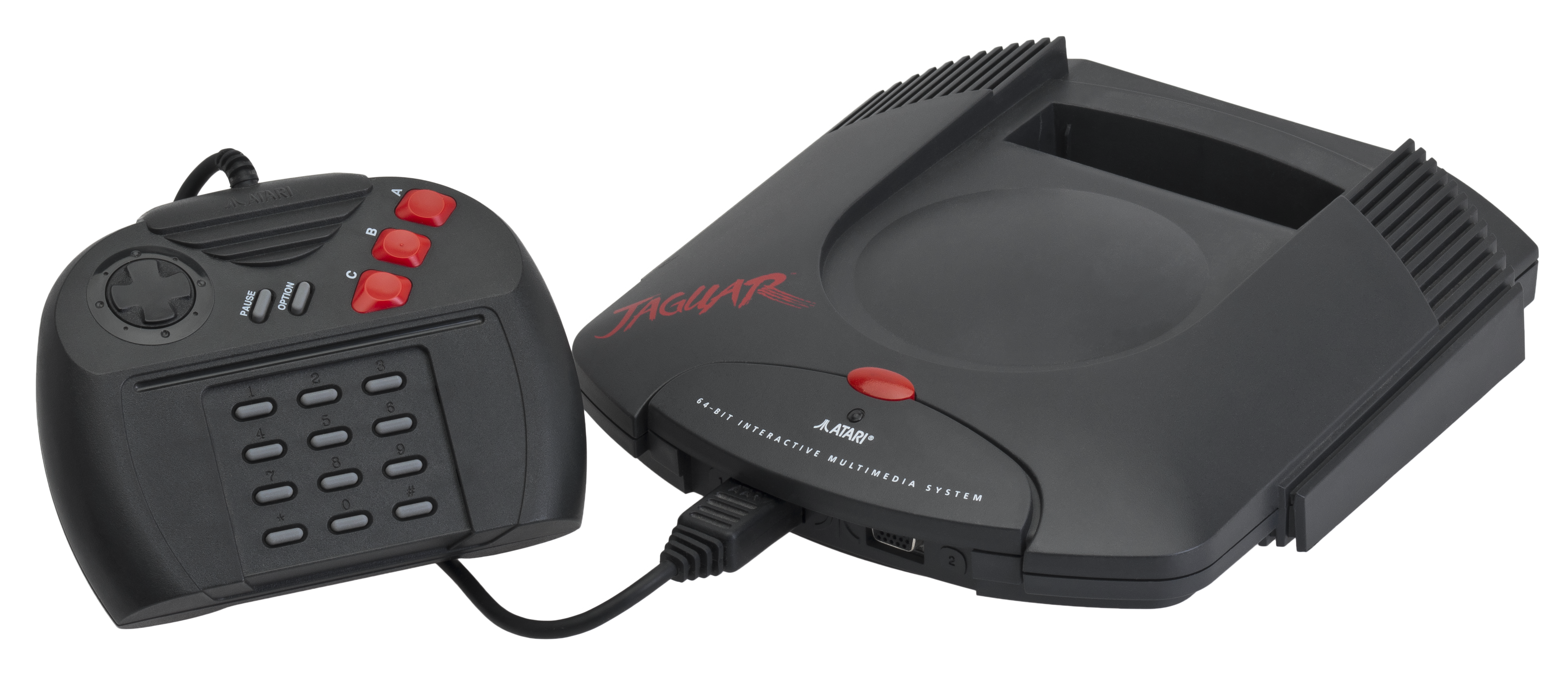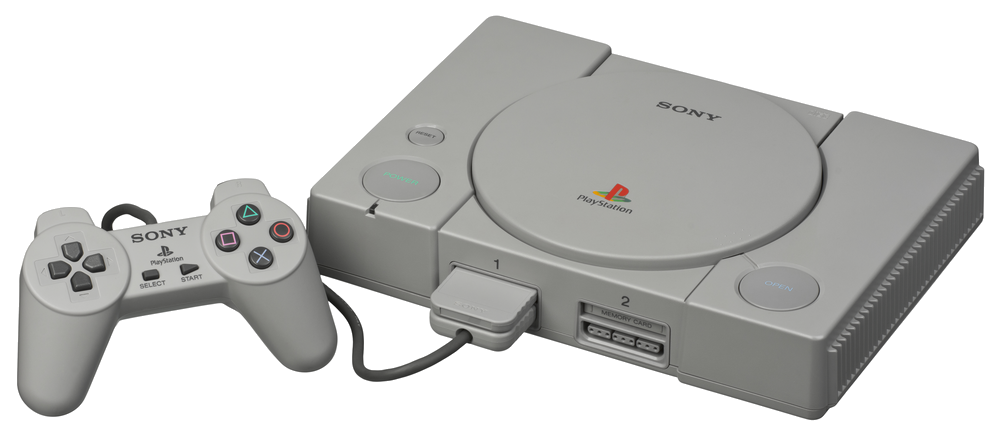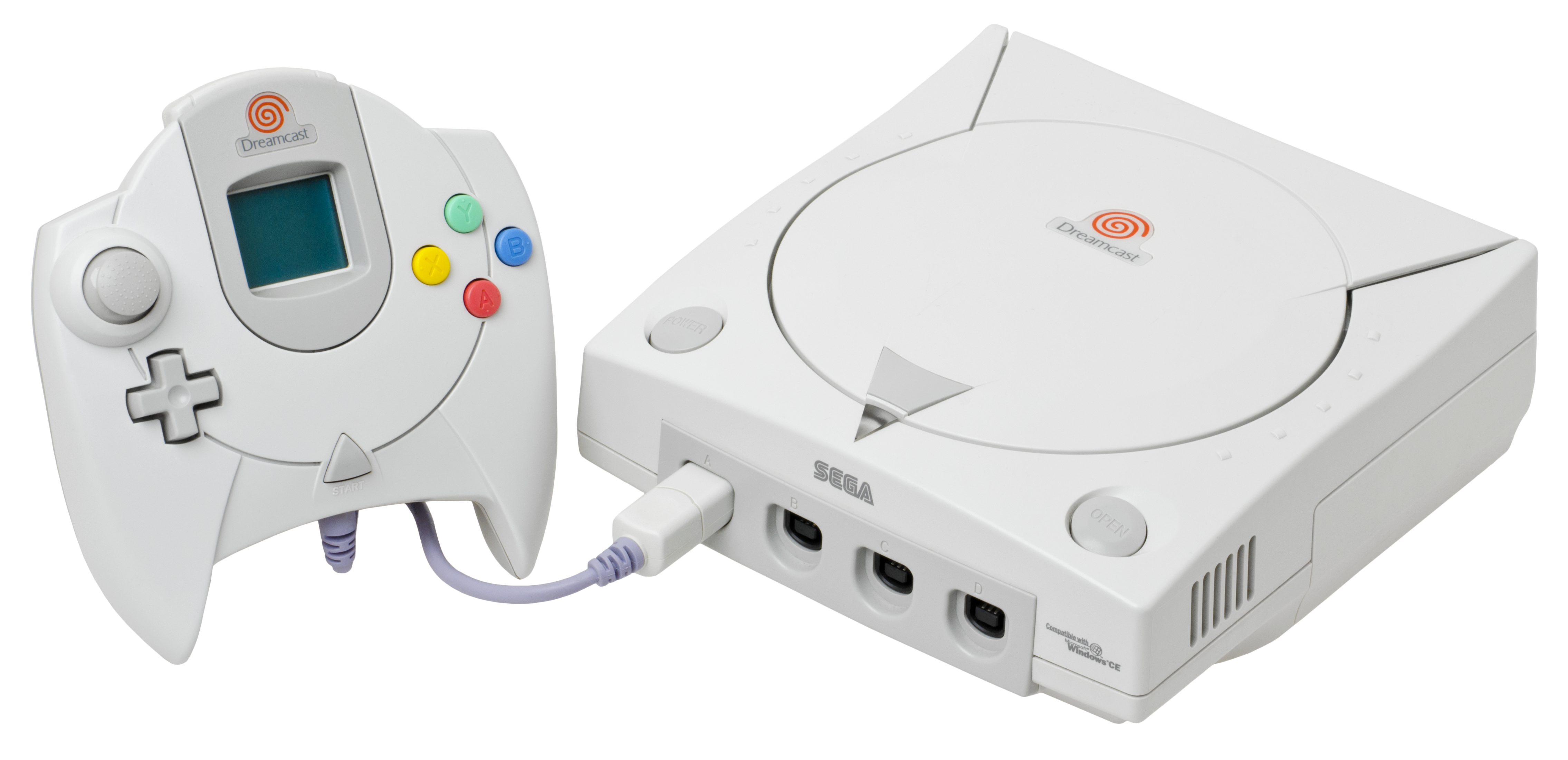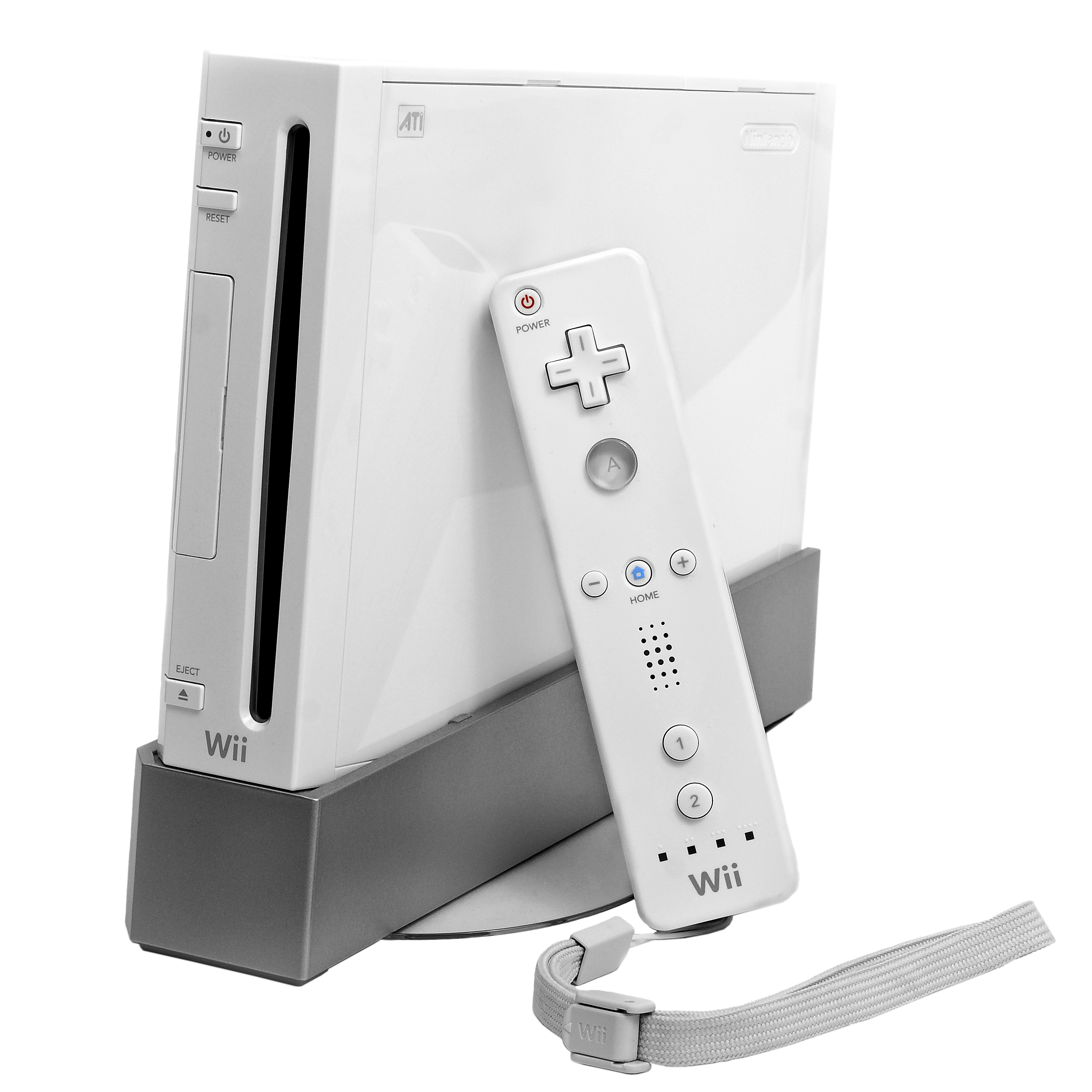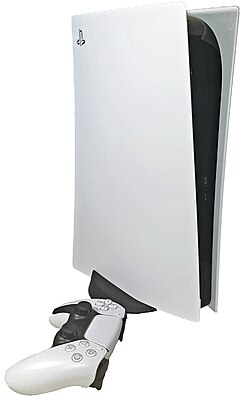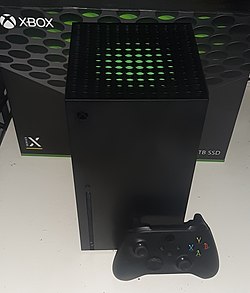Magnavox Odyssey (1972)
The journey of home video gaming began with Ralph Baer's visionary creation, the Magnavox Odyssey. As the world's first commercial home video game console, this analog system had no microprocessor or sound capabilities. Despite its technical limitations, the Odyssey provided families with a revolutionary form of entertainment through its simple white dots displayed on television screens.
Players enhanced their experience using colorful plastic overlays that attached to the TV screen, adding visual context to the otherwise plain gaming environment. The console shipped with six game cards capable of producing approximately 12 different games. Its controllers were two rectangular boxes with knobs that allowed players to move vertically and horizontally across the screen. Though primitive by modern standards, the Odyssey sold over 350,000 units and established the foundation for the multi-billion dollar industry we know today.
Find out more....Atari 2600 (1977)
Originally released as the Atari Video Computer System (VCS), the Atari 2600 truly popularized home video gaming and became the dominant platform of its era. With its iconic wood-veneer design and the revolutionary concept of interchangeable ROM cartridges, the 2600 allowed gamers to build libraries of games rather than being limited to built-in options.
The console's technical specifications were modest by modern standards: just 128 bytes of RAM and a 1.19 MHz CPU. The simplistic-but-functional single-button joystick controller became instantly recognizable and influenced controller design for years to come. Games like Space Invaders, Pitfall!, Adventure, and Pac-Man became household names, despite the significant graphical compromises required to bring arcade experiences home.
The Atari 2600's incredible longevity—remaining in production until 1992—reflects its massive cultural impact. With over 30 million units sold, it dominated living rooms until the video game market crash of 1983, which temporarily threatened the entire industry's existence.
Find out more....Intellivision (1979)
Mattel Electronics entered the console wars with the Intellivision, positioning it as a more sophisticated alternative to the Atari 2600. The console distinguished itself with superior graphic capabilities, featuring 16-bit color at a time when such visual fidelity was revolutionary for home entertainment.
The Intellivision's unique controller featured a 12-button numeric keypad and a distinctive directional disc instead of a joystick. This design allowed for more complex inputs and game mechanics, particularly benefiting the console's renowned sports titles and strategy games. In 1982, Mattel introduced the Intellivoice module, making the Intellivision the first home console capable of speech synthesis.
With approximately 3 million units sold worldwide, the Intellivision couldn't match Atari's market dominance, but it established Mattel as an innovative competitor and demonstrated that there was room for multiple players in the nascent video game console market.
Find out more....ColecoVision (1982)
Arriving late in the second console generation, the ColecoVision made a significant impact with graphics that more closely resembled arcade machines than any previous home system. Coleco strategically bundled the hit arcade game Donkey Kong with the console, immediately giving consumers a high-quality title showcasing the system's capabilities.
The ColecoVision's controllers featured both a joystick and numeric keypad similar to the Intellivision, allowing for more complex game control schemes. In an innovative move to expand its library, Coleco created the Expansion Module #1, which provided compatibility with Atari 2600 games—a prescient example of backward compatibility that would become important in later console generations.
Despite building a respectable library of approximately 170 games during its short lifespan, the ColecoVision became a casualty of the 1983 video game crash and was discontinued by 1985. Nevertheless, it's remembered as one of the most technically impressive consoles of its era, with approximately 2 million units sold.
Find out more....Nintendo Entertainment System (1983/1985)
When the video game market crashed in 1983, many industry observers believed console gaming was a passing fad. Nintendo proved them wrong with the Family Computer (Famicom) in Japan in 1983, redesigned and rebranded as the Nintendo Entertainment System for its North American release in 1985.
The NES featured a distinct gray and red boxy design with front-loading cartridges (unlike the top-loading Japanese version). Its technical specifications included an 8-bit processor running at 1.79 MHz with a custom Picture Processing Unit that could display up to 25 colors simultaneously from a palette of 52. Nintendo introduced the iconic cross-shaped D-pad controller design that would influence virtually all future game controllers.
Nintendo's strict quality control policies ensured a library of consistently high-quality games, preventing the market oversaturation that contributed to the previous crash. Franchises born or popularized on the NES—including Super Mario Bros., The Legend of Zelda, Metroid, and Final Fantasy—remain industry powerhouses decades later.
With over 61 million units sold worldwide and a game library exceeding 700 titles, the NES revitalized the home console market and established Nintendo as the dominant force in video gaming for years to come. Its cultural impact extended beyond games into merchandise, television shows, and lasting gaming vocabulary.
Find out more....Sega Master System (1985)
While Nintendo dominated the North American market during the 8-bit era, Sega's Master System provided formidable competition internationally. Technically superior to the NES with better graphical capabilities, the Master System featured a sharper display resolution and larger color palette.
The console found particular success in Europe, Brazil, and Australia, where it often outsold Nintendo's offering. The Master System's library of games included titles like Alex Kidd, Phantasy Star, and Wonder Boy. Sega also offered innovative accessories like the SegaScope 3D glasses, which provided primitive but impressive stereoscopic 3D effects for compatible games.
Although the Master System sold a respectable 13 million units worldwide, it failed to break Nintendo's stronghold in the crucial North American and Japanese markets. Nevertheless, this console established Sega as a legitimate competitor in the industry and built a foundation for their subsequent success with the Genesis/Mega Drive.
Find out more....Sega Genesis/Mega Drive (1988)
Sega's 16-bit console—known as the Mega Drive in most regions outside North America—represented a significant technological leap forward and kicked off what many consider the first true "console war." Launching with the tagline "Genesis does what Nintendon't," Sega positioned their new console as the cooler, more mature alternative to Nintendo's offerings.
The Genesis featured a Motorola 68000 CPU running at 7.6 MHz, considerably more powerful than the 8-bit competition. Sega's marketing emphasized the console's "blast processing" capabilities, a somewhat nebulous term that nonetheless effectively communicated the system's speed advantage. The introduction of Sonic the Hedgehog in 1991 gave Sega a mascot that could rival Mario, with gameplay that showcased the Genesis's smooth, fast scrolling capabilities.
The console received several accessories throughout its lifespan, including the six-button controller (introduced primarily for fighting games like Street Fighter II), the Sega CD add-on for multimedia capabilities, and the ultimately unsuccessful 32X expansion. The Genesis excelled with arcade ports, sports games (particularly the EA Sports lineup), and action titles.
With 30-35 million units sold worldwide, the Genesis/Mega Drive established Sega as a major industry player and, in some markets like North America, temporarily overtook Nintendo in market share—an impressive achievement given Nintendo's previous dominance.
Find out more....TurboGrafx-16/PC Engine (1989)
The collaboration between Hudson Soft and NEC produced a console that was something of a technical hybrid: an 8-bit CPU paired with a 16-bit graphics processor. Known as the PC Engine in Japan and TurboGrafx-16 in North America, this system achieved significant success in Japan but struggled to gain traction in Western markets.
The TurboGrafx-16 was the first console to receive a CD-ROM add-on (the CD-ROM²), pioneering the use of optical media for gaming and enabling experiences with better audio and more expansive content. Instead of traditional cartridges, games came on small card-like "HuCards," allowing for a compact console design.
The system became known for its excellent shoot-'em-up games and anime-inspired titles, with notable games including Bonk's Adventure, R-Type, and Ys I & II. Despite its innovations and strong Japanese performance, the TurboGrafx-16 sold modestly in North America, unable to overcome the Nintendo-Sega duopoly. Nevertheless, it remains a respected system among retro gaming enthusiasts for its unique library and technological innovations.
Find out more....Super Nintendo Entertainment System (1990)
Nintendo's entry into the 16-bit era refined rather than revolutionized their approach to console gaming. The Super Nintendo Entertainment System (Super Famicom in Japan) featured a custom 16-bit Ricoh 5A22 processor running at 3.58 MHz and introduced the "Mode 7" graphics technique, which allowed for pseudo-3D rotation and scaling effects that enabled impressive visual tricks for racing games and RPGs.
The SNES controller established a template that influences controllers to this day, introducing the four face buttons (arranged in a diamond pattern) plus L and R shoulder buttons. The console's audio capabilities were notably advanced, with its Sony-designed sound chip allowing for orchestral-quality music that gave games like Final Fantasy VI and Chrono Trigger their distinctive soundtracks.
The SNES library reads like a greatest-hits collection of gaming: Super Mario World, The Legend of Zelda: A Link to the Past, Donkey Kong Country, Super Metroid, and Final Fantasy III (VI in Japan) are routinely featured in discussions of the best games ever made. Despite launching after the Genesis and facing intense competition, the SNES ultimately proved more commercially successful with approximately 49 million units sold worldwide.
Regional differences were pronounced with this generation—the North American SNES featured a boxy purple-and-gray design, while the Japanese and European versions had a more colorful, rounded appearance.
Find out more....Atari Jaguar (1993)
Atari's final foray into the console market was the Jaguar, ambitiously marketed as the world's first 64-bit system—though this claim was technically debatable due to its complex multi-processor architecture. The Jaguar featured two 32-bit processors and a 64-bit graphics co-processor called "Tom," alongside an audio processor called "Jerry."
This complicated architecture proved difficult for developers to fully utilize, resulting in a limited library of approximately 50 official releases. Despite some technically impressive titles like Alien vs Predator and Tempest 2000, the Jaguar failed to capture significant market share against established competitors from Sega and Nintendo, as well as the newcomer Sony.
With less than 250,000 units sold, the Jaguar was commercially unsuccessful and represented Atari's exit from the hardware business as an independent entity. An optional CD add-on was released in limited quantities but failed to revitalize the platform's fortunes.
Find out more....Sony PlayStation (1994)
Few consoles have altered the industry landscape as dramatically as Sony's PlayStation. Originally conceived as a CD-ROM add-on for the Super Nintendo through a partnership between Sony and Nintendo, the project evolved into a standalone console after Nintendo abruptly terminated the collaboration. This business decision ranks among the most consequential mistakes in gaming history.
The PlayStation featured a 32-bit RISC CPU running at 33.8 MHz and specialized hardware for 3D geometric transformations—capabilities that enabled the transition from 2D sprites to 3D polygon-based gaming. The console's use of CD-ROM media provided developers with significantly more storage space (650MB compared to cartridges typically measured in megabits), enabling full-motion video sequences, voice acting, and CD-quality soundtracks.
Sony's controller design established an enduring template with its ergonomic grip, four shoulder buttons, and iconic PlayStation button symbols. The introduction of memory cards for game saves addressed the storage limitations of CD media, which couldn't be written to directly.
The PlayStation's massive library of over 7,900 games worldwide included landmark titles that defined new genres or elevated existing ones: Final Fantasy VII revolutionized RPGs, Metal Gear Solid set new standards for cinematic storytelling, Gran Turismo defined the racing simulation genre, and Resident Evil established survival horror conventions.
With over 102 million units sold worldwide, the PlayStation transformed Sony into a dominant force in the industry and pushed video games further into mainstream entertainment. The console's mature marketing and diverse library expanded the gaming demographic beyond children and teenagers, reaching young adults in unprecedented numbers.
Find out more....Sega Saturn (1994)
The Sega Saturn represented both technical innovation and strategic missteps. Featuring a complex dual-CPU architecture with two Hitachi SH-2 processors running at 28.6 MHz and an array of additional processors for audio, 2D graphics, and 3D rendering, the Saturn was powerful but notoriously difficult to program for compared to its competitors.
In North America, Sega surprised both consumers and retailers with a rushed launch in May 1995—four months ahead of schedule—in an attempt to beat the PlayStation to market. This decision resulted in limited launch titles, insufficient retail presence, and developer frustration. At $399, it also launched at a higher price point than Sony's system.
Despite these challenges, the Saturn excelled at 2D games and was particularly successful in Japan, where it hosted popular arcade ports and fighting games. Notable titles included Virtua Fighter, NiGHTS into Dreams, Panzer Dragoon, and Sega Rally Championship. The console ultimately sold approximately 9.5 million units worldwide, falling well short of the PlayStation and ending Sega's ability to compete as a hardware market leader.
Find out more....Nintendo 64 (1996)
Nintendo made the controversial decision to continue using cartridge technology for the Nintendo 64 while competitors embraced CD-ROM. This choice provided some advantages—faster loading times, greater durability, and no need for memory cards since cartridges could save data directly—but severely limited storage capacity (typically 8-64MB compared to 650MB for CDs) and increased manufacturing costs for games.
The N64's technical specifications included a 93.75 MHz 64-bit CPU developed by Silicon Graphics and a 64-bit Reality Coprocessor for 3D graphics rendering. The console introduced several innovations to the gaming landscape, most notably the analog stick on its trident-shaped controller, which enabled precise 360-degree movement crucial for 3D gaming. The controller also featured a unique expansion port for accessories like the Rumble Pak, which introduced force feedback to console gaming.
The N64 boasted four controller ports built-in, emphasizing local multiplayer experiences. While the console had a smaller library than its competitors (approximately 400 games worldwide versus thousands for PlayStation), it hosted some of the most influential games ever created. Super Mario 64 established the template for 3D platformers, The Legend of Zelda: Ocarina of Time is frequently cited in "greatest game of all time" discussions, and GoldenEye 007 demonstrated that first-person shooters could excel on consoles.
Limited third-party support due to the cartridge format and complex development environment meant Nintendo relied heavily on first-party titles. Nevertheless, the N64 sold approximately 33 million units worldwide and remains beloved by fans of Nintendo's flagship franchises.
Find out more....Sega Dreamcast (1998)
The Dreamcast was in many ways ahead of its time, featuring capabilities that would become standard in later console generations. As the first console of the "sixth generation," it emphasized online connectivity with a built-in 56K modem and pioneered features like downloadable content and voice chat for online play.
Powered by a 200 MHz Hitachi SH-4 CPU and a PowerVR2 graphics processor capable of 7 million polygons per second, the Dreamcast delivered arcade-quality graphics for its era. Its Visual Memory Unit (VMU) memory cards featured a unique LCD screen and buttons, allowing for mini-games that could be played separately from the console or used to display game information during play.
The Dreamcast launched with a strong lineup including Sonic Adventure and Soul Calibur, with later standouts like Shenmue, Jet Set Radio, and Phantasy Star Online showcasing the system's capabilities. Despite positive reception and approximately 9.13 million units sold, the Dreamcast had a short lifespan, discontinued in 2001 as Sega exited the hardware business amid financial struggles and in anticipation of competition from PlayStation 2.
The console retains a devoted fan base, with many considering it Sega's most innovative hardware offering and lamenting its premature discontinuation.
Find out more....Sony PlayStation 2 (2000)
The PlayStation 2 stands as the best-selling video game console of all time, with over 155 million units sold during its remarkable production run from 2000 to 2014. Building on the original PlayStation's success, the PS2 delivered significant technical improvements with its 128-bit "Emotion Engine" CPU running at 294 MHz and the "Graphics Synthesizer" GPU capable of 66 million polygons per second.
Perhaps the PS2's most significant advantage was its built-in DVD player functionality at a time when standalone DVD players were often more expensive than the console itself. This feature transformed the PS2 into an entertainment center that appealed beyond the traditional gaming audience. Backward compatibility with original PlayStation games also provided immediate value to existing PlayStation owners.
The console boasted USB ports for peripherals and an expansion bay for the network adapter that enabled online gaming for titles like SOCOM: U.S. Navy SEALs and Final Fantasy XI. The DualShock 2 controller refined Sony's already successful design with pressure-sensitive buttons providing additional input options.
The PS2's massive library of over 4,000 games included seminal titles across all genres: Grand Theft Auto: San Andreas, Final Fantasy X, God of War, Metal Gear Solid 2, Kingdom Hearts, Shadow of the Colossus, and countless others. The system's longevity was remarkable, with games still being released as late as 2013, well into the PS3's lifecycle.
Find out more....Nintendo GameCube (2001)
Following the cartridge-based N64, Nintendo embraced optical media with the GameCube but opted for a proprietary mini-DVD format rather than standard DVDs. This decision reduced piracy but limited storage to 1.5GB compared to PS2's 4.7GB DVDs and prevented the console from playing DVD movies.
The GameCube's technical specifications were competitive, featuring an IBM PowerPC "Gekko" processor running at 485 MHz and an ATI "Flipper" GPU. Its compact design with a carrying handle emphasized portability, and the console came in several colors throughout its lifespan—most iconically indigo purple.
Nintendo introduced an innovative controller with an asymmetrical button layout, featuring a large A button surrounded by smaller B, X, and Y buttons. The GameCube also offered connectivity with the Game Boy Advance handheld via a special cable, and the Game Boy Player accessory allowed playing Game Boy games on a television.
While the console had strong first-party offerings like Super Smash Bros. Melee, Metroid Prime, and The Legend of Zelda: Wind Waker, it struggled to attract the same level of third-party support as its competitors. With approximately 21.74 million units sold worldwide, the GameCube placed third in its generation but maintained Nintendo's reputation for quality first-party software.
Find out more....Microsoft Xbox (2001)
Microsoft's entry into the console market represented a significant disruption to the established order. Drawing on the company's PC expertise, the Xbox featured architecture similar to a personal computer: an Intel Pentium III-based CPU running at 733 MHz, 64MB of unified RAM, and an NVIDIA graphics processor.
The Xbox introduced several forward-looking features to console gaming, most notably a built-in hard drive for game saves and downloaded content, eliminating the need for memory cards. Its Ethernet port enabled Xbox Live, a comprehensive online gaming service that set new standards for console multiplayer experiences with features like friend lists, voice chat, and matchmaking.
The console's flagship title, Halo: Combat Evolved, demonstrated how first-person shooters could excel on consoles and established what would become Microsoft's most important gaming franchise. Other notable exclusives included Project Gotham Racing, Fable, and Forza Motorsport. The Xbox also attracted PC-style games that were previously rare on consoles, like Star Wars: Knights of the Old Republic.
The original Xbox controller (later nicknamed "The Duke") was criticized for its large size, leading Microsoft to release the smaller "Controller S" that eventually became the standard. Despite being a newcomer to the highly competitive console market, the Xbox sold approximately 24 million units worldwide and established Microsoft as a serious contender in the gaming industry.
Find out more....Microsoft Xbox 360 (2005)
Microsoft's second console launched a year earlier than its competitors, establishing an early lead in the HD gaming era. The Xbox 360 featured a custom PowerPC-based CPU with three 3.2 GHz cores and a custom ATI graphics processor capable of delivering games at HD resolutions up to 1080p.
The Xbox 360 expanded on the original Xbox's online focus with a comprehensive Xbox Live service now divided into free Silver and paid Gold tiers. The system introduced the achievement system—awarding players points for specific in-game accomplishments—which has since become standard across platforms. The Xbox Live Marketplace pioneered digital distribution of games, add-on content, and media on consoles.
The 360's library featured strong exclusives including Halo 3, Gears of War, and Forza Motorsport series, while multiplatform titles often performed better on Microsoft's console than on the initially more complex PlayStation 3. In 2010, Microsoft released the Kinect motion sensing peripheral, which temporarily broadened the console's appeal to casual gamers.
Despite the infamous "Red Ring of Death" hardware failure that plagued early models and cost Microsoft over $1 billion in warranty extensions, the Xbox 360 sold approximately 84 million units worldwide. The console's interface underwent multiple redesigns throughout its lifespan, evolving from the "blades" UI to increasingly sophisticated dashboard experiences.
Find out more....Sony PlayStation 3 (2006)
Sony's entry into the HD generation was ambitious but initially troubled. The PlayStation 3 featured the complex Cell microprocessor architecture—developed in partnership with Toshiba and IBM—consisting of one PowerPC-based 3.2 GHz core and eight specialized SPE cores. This powerful but difficult-to-program-for system was paired with an NVIDIA graphics processor and a built-in Blu-ray drive.
The PS3 launched at an unprecedented $599 for the 60GB model, significantly more expensive than competitors. This high price, combined with the complex architecture that made game development challenging, gave the console a slow start. Sony gradually addressed these issues with price cuts, a simplified development environment, and increasingly compelling exclusive games.
The console included free PlayStation Network online access in contrast to Xbox Live's subscription model. The PlayStation Store provided digital distribution, and in 2010 Sony introduced PlayStation Plus, offering subscribers monthly games. The PS3 also introduced the PlayStation Move motion controllers to compete with Nintendo's Wii Remote.
The PS3's exclusive games were often showcase technical achievements and storytelling excellence: the Uncharted series, God of War III, The Last of Us, and Journey exemplified the platform's strengths. The console initially offered the ability to install Linux as an alternative operating system through the "OtherOS" feature, though this was later removed in a firmware update.
Despite its rocky start, the PS3 ultimately sold approximately 87.4 million units worldwide, slightly edging out the Xbox 360 in global sales.
Find out more....Nintendo Wii (2006)
While competitors focused on high-definition graphics and processing power, Nintendo pursued a fundamentally different strategy with the Wii. The console emphasized innovative control methods over technical specifications, featuring the revolutionary Wii Remote controller that detected motion in three dimensions, allowing for intuitive, physical gameplay experiences.
The Wii's technical specifications were modest compared to its competitors—a PowerPC-based 729 MHz "Broadway" CPU and an ATI "Hollywood" GPU that output at standard definition resolutions. This deliberate choice allowed Nintendo to price the console at an accessible $249 while still generating a profit on hardware sales, unlike the initially loss-leading business models of Microsoft and Sony.
Wii Sports, bundled with the console in most regions, perfectly showcased the system's unique capabilities and became a cultural phenomenon that appealed far beyond traditional gamers. The Wii's accessibility attracted seniors, young children, and casual players who had never considered themselves gamers. Nintendo later expanded the controller options with the Wii MotionPlus add-on for improved accuracy and the Classic Controller for traditional gaming experiences.
The Virtual Console service allowed players to purchase and download games from previous Nintendo systems and other platforms. The Wii was backward compatible with GameCube games and controllers through ports hidden behind a panel on the console.
With over 101 million units sold worldwide, the Wii ranks among the most successful consoles ever and demonstrated that innovation could triumph over raw technical power. Games like Super Mario Galaxy, The Legend of Zelda: Twilight Princess, and Wii Fit showcased Nintendo's continued excellence in first-party software development.
Find out more....Nintendo Wii U (2012)
Nintendo's follow-up to the successful Wii was the first console of the eighth generation but failed to recapture its predecessor's magic. The Wii U's defining feature was its GamePad controller with an embedded 6.2-inch touchscreen, enabling asymmetric gameplay where one player had a different view or role than others using traditional controllers.
The console represented Nintendo's first HD-capable system, powered by an IBM PowerPC-based multi-core processor and an AMD Radeon-based GPU. Backward compatibility with Wii games and accessories provided additional value, though GameCube support was removed.
Despite some critically acclaimed titles—Super Mario 3D World, Mario Kart 8, Splatoon, and The Legend of Zelda: Breath of the Wild (which also launched on Switch)—the Wii U suffered from confusing marketing that failed to clearly communicate whether the GamePad was an accessory for the Wii or part of an entirely new system. Limited third-party support further hampered the console's appeal.
With only 13.56 million units sold worldwide, the Wii U ranks as Nintendo's worst-selling major home console. Nevertheless, many of its concepts and games would find greater success when reworked or ported to the subsequent Nintendo Switch.
Find out more....Sony PlayStation 4 (2013)
Learning from the PlayStation 3's complicated architecture, Sony designed the PlayStation 4 with developer-friendly x86-64 architecture featuring an 8-core AMD Jaguar CPU and Radeon-based graphics. This approach simplified cross-platform development and helped secure strong third-party support.
The DualShock 4 controller introduced several new features, including a touchpad, built-in speaker, and share button that emphasized social gaming experiences through livestreaming and screenshot sharing. The console's user interface focused on social integration and ease of access to digital content through the PlayStation Store.
PlayStation Plus membership became required for online multiplayer gaming, but Sony enhanced the value proposition with monthly free games. The PlayStation Now game streaming service, launched in 2014, offered access to a library of games through cloud technology. In 2016, Sony released the PlayStation VR headset, bringing virtual reality gaming to consoles at a more accessible price point than PC-based solutions.
The PS4's extensive library featured acclaimed exclusives like God of War (2018), Horizon Zero Dawn, Bloodborne, Spider-Man, and Uncharted 4. Sony's emphasis on narrative-driven single-player experiences distinguished the platform from competitors focusing more heavily on online services and multiplayer.
With over 115 million units sold worldwide, the PlayStation 4 ranks as Sony's second-most successful home console after the PS2 and dominated its generation in terms of hardware sales.
Find out more....Microsoft Xbox One (2013)
Microsoft's initial vision for the Xbox One as an all-in-one entertainment system rather than a gaming-focused device created significant controversy. The original plan included requirements for internet connectivity checks every 24 hours and restrictions on used game sales, though Microsoft reversed these policies before launch in response to consumer backlash.
The console's architecture paralleled the PS4 with an 8-core AMD Jaguar CPU and AMD Radeon GCN GPU, though with slightly lower graphics performance. The Xbox One launched with the Kinect 2.0 sensor included, contributing to its higher $499 price point compared to the PS4's $399. Microsoft later offered Kinect-free bundles at lower prices and eventually discontinued the peripheral.
Throughout its lifespan, the Xbox One received multiple hardware revisions: the Xbox One S offered a slimmer design, 4K video playback, and HDR support, while the Xbox One X became the most powerful console of its generation with true 4K gaming capabilities. The console's backward compatibility program eventually supported selected Xbox 360 and original Xbox games.
Microsoft emphasized services like Xbox Game Pass, a subscription offering access to a rotating library of downloadable games, which has become increasingly central to the company's gaming strategy. Notable exclusives included Halo 5: Guardians, Forza Horizon series, Gears of War 4, and Sea of Thieves.
While Microsoft stopped reporting exact sales figures, estimates place Xbox One lifetime sales at approximately 51 million units—less than half of PS4 sales but still representing a significant hardware presence.
Find out more....Nintendo Switch (2017)
Nintendo's innovative Switch transformed console conventions by functioning as both a traditional home console and a portable handheld. The system features a tablet-like main unit with detachable "Joy-Con" controllers that can be used in multiple configurations: attached to the tablet for handheld play, removed for two-player gaming, or used while the tablet is propped up via its built-in kickstand. The included dock allows the system to connect to a television for traditional console gaming.
Powered by an NVIDIA Tegra X1 system-on-chip, the Switch prioritizes gameplay innovation and versatility over raw graphical power. The return to cartridge-based games suited the portable nature of the system while providing faster loading times than optical discs.
The console launched alongside The Legend of Zelda: Breath of the Wild, widely considered one of the greatest games of all time. Other successful first-party titles include Super Mario Odyssey, Animal Crossing: New Horizons, and Mario Kart 8 Deluxe. The system has also attracted stronger third-party and independent developer support than its predecessor.
In 2019, Nintendo released the Switch Lite, a handheld-only variant at a lower price point, and in 2021 introduced the Switch OLED Model featuring an improved screen and other minor enhancements.
The Switch has sold over 122 million units as of early 2024, making it Nintendo's most successful home console and the third best-selling console of all time behind only the PlayStation 2 and Nintendo DS handheld.
Find out more....Sony PlayStation 5 (2020)
Sony's latest console emphasizes speed and immersion with its custom AMD Zen 2 CPU running at up to 3.5 GHz, AMD RDNA 2 GPU capable of ray-tracing, and most significantly, an ultra-high-speed SSD that virtually eliminates loading times. The console's Tempest 3D AudioTech engine provides advanced spatial sound for more immersive gaming experiences.
The PlayStation 5's striking design features white faceplates flanking a black central unit, representing a significant departure from previous PlayStation aesthetics. The console is available in two variants: a standard edition with a 4K Blu-ray disc drive and a Digital Edition without one.
The DualSense controller represents a major evolution of Sony's controller design, introducing haptic feedback that can simulate different textures and surfaces, and adaptive triggers that can change their resistance based on in-game actions. These features allow for new types of gameplay experiences and enhanced immersion.
Backward compatibility with most PS4 games provides immediate value to PlayStation players transitioning to the new system. Notable PS5 titles include Demon's Souls, Ratchet & Clank: Rift Apart, Returnal, and Horizon Forbidden West, with games increasingly leveraging the system's unique capabilities as developers become more familiar with the hardware.
Find out more....Microsoft Xbox Series X/S (2020)
Microsoft adopted a two-pronged approach for the ninth console generation with the high-end Xbox Series X and the more affordable, digital-only Xbox Series S. The Series X features a custom AMD Zen 2 CPU with 8 cores running at 3.8 GHz, a 12 TFLOPS AMD RDNA 2 GPU, and a 1TB custom NVMe SSD. The Series S offers a similar CPU but with a less powerful 4 TFLOPS GPU and smaller 512GB SSD, targeting 1080p-1440p gaming rather than the Series X's 4K capabilities.
The Xbox Series X's monolithic design resembles a small tower PC and emphasizes airflow for cooling, while the Series S is the smallest Xbox ever produced. Both consoles feature the Xbox Velocity Architecture for fast loading times and Quick Resume functionality that allows players to suspend and instantly resume multiple games.
Microsoft has emphasized backward compatibility as a key selling point, with the new consoles playing thousands of games from previous Xbox generations, often with enhanced performance and visual fidelity. The Xbox Smart Delivery feature ensures players always access the version of games optimized for their console.
The Xbox Game Pass subscription service has become central to Microsoft's gaming strategy, offering access to hundreds of games, including all first-party titles on their release day. Notable Xbox Series X/S games include Halo Infinite, Forza Horizon 5, Microsoft Flight Simulator, and Starfield.
Find out more....

